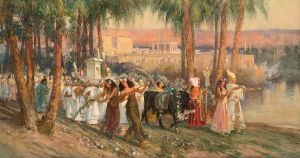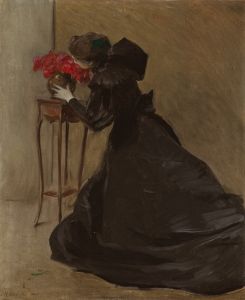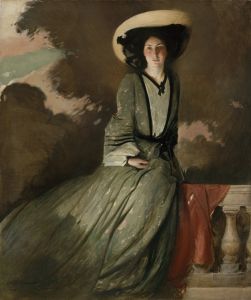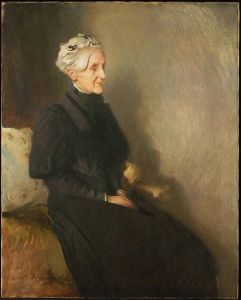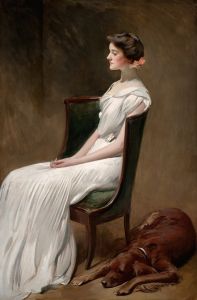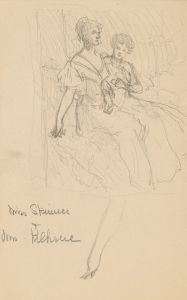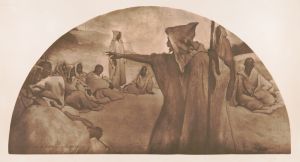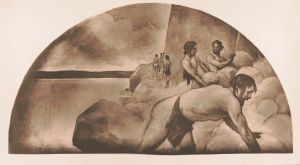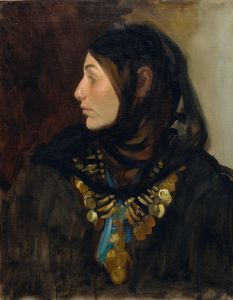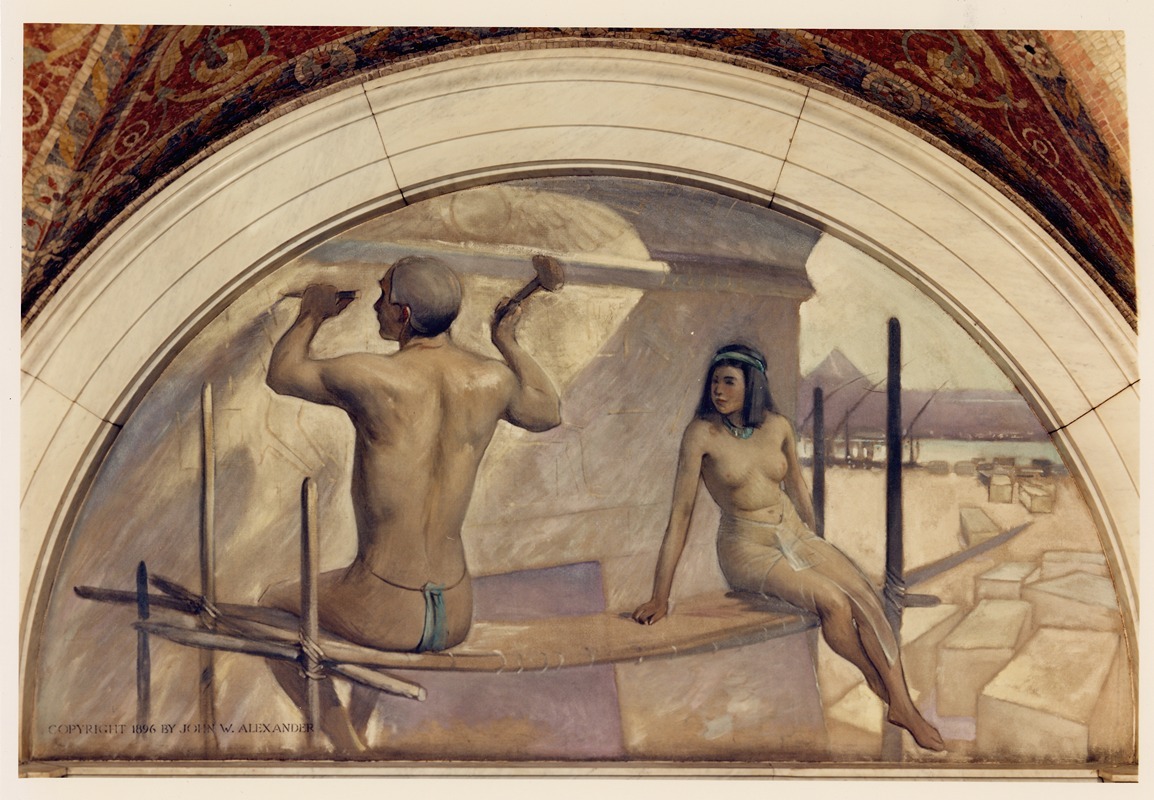
Egyptian hieroglyphics mural in Evolution of the Book series
A hand-painted replica of John White Alexander’s masterpiece Egyptian hieroglyphics mural in Evolution of the Book series, meticulously crafted by professional artists to capture the true essence of the original. Each piece is created with museum-quality canvas and rare mineral pigments, carefully painted by experienced artists with delicate brushstrokes and rich, layered colors to perfectly recreate the texture of the original artwork. Unlike machine-printed reproductions, this hand-painted version brings the painting to life, infused with the artist’s emotions and skill in every stroke. Whether for personal collection or home decoration, it instantly elevates the artistic atmosphere of any space.
The "Egyptian Hieroglyphics" mural is part of the "Evolution of the Book" series created by the American artist John White Alexander. This series of murals was commissioned for the Library of Congress in Washington, D.C., and was completed between 1896 and 1897. The murals are located in the Thomas Jefferson Building, which is the oldest of the four buildings of the Library of Congress.
John White Alexander (1856-1915) was a prominent American painter and illustrator known for his portraits, murals, and decorative works. His "Evolution of the Book" series is a significant example of his mural work and reflects his interest in the history of written communication.
The "Egyptian Hieroglyphics" mural specifically depicts the ancient Egyptian contribution to the development of writing. Hieroglyphics were the formal writing system used in Ancient Egypt, consisting of a combination of logographic and alphabetic elements. This writing system was used for religious texts, monumental inscriptions, and administrative documents.
In the mural, Alexander portrays a scene that emphasizes the importance of scribes and the act of writing in ancient Egyptian society. The figures in the mural are depicted in traditional Egyptian attire, and the setting includes elements that are characteristic of ancient Egyptian architecture and art. The use of hieroglyphics is prominently featured, highlighting the complexity and significance of this early writing system.
The "Evolution of the Book" series as a whole traces the development of written communication from ancient times to the modern era. It includes other murals that depict various historical periods and cultures, illustrating the progression of writing and the dissemination of knowledge. The series is a testament to the importance of books and written records in the preservation and transmission of human knowledge.
Alexander's murals are characterized by their detailed and historically informed representations, as well as their artistic quality. The "Egyptian Hieroglyphics" mural, like the other works in the series, combines historical accuracy with artistic interpretation, creating a visually engaging and educational experience for viewers.
The murals in the Thomas Jefferson Building are an integral part of the Library of Congress's rich artistic and architectural heritage. They contribute to the building's status as a national treasure and a symbol of the importance of knowledge and learning in American culture.
Overall, the "Egyptian Hieroglyphics" mural by John White Alexander is a significant work that celebrates the ancient Egyptian contribution to the history of writing and underscores the broader theme of the evolution of the book.





![Karnac [Karnak]. Nov. 27, 1838.](/imgs/217501/s/david-roberts-karnac-karnak-nov-27-1838-2ea4b2c4.jpg)
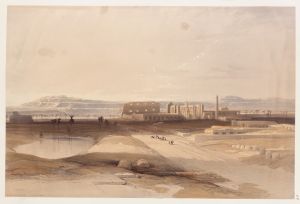
![Temple at Esneh [Isnâ]. Nov. 25th, 1838.](/imgs/217542/s/david-roberts-temple-at-esneh-isna-nov-25th-1838-c31fdf34.jpg)
